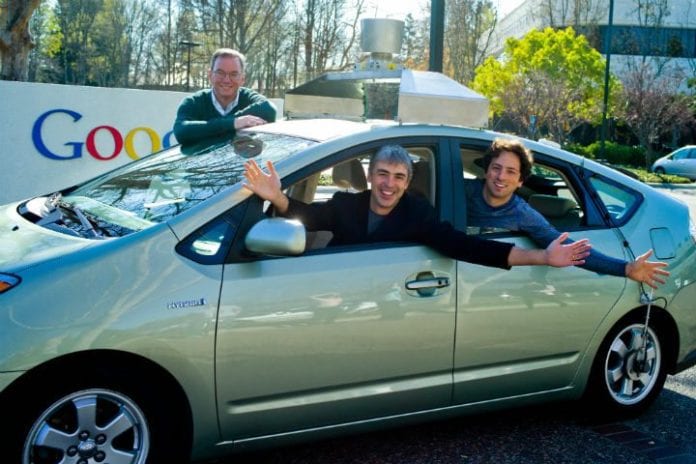Much has been written in the last week or so about Google’s “rumored” upcoming mobile virtual network operator play, including the reasons it will not be successful and the challenges Google will face challenging the incumbent mobile operators. As we read each developing story, we smiled. After all, the Google-in-wireless rumors are nothing new. But what is surprising about the latest MVNO stories is how Google appears to be approaching wireless from a conventional, rather than revolutionary, stance. Time to explain.
Deja vu all over again
About 18 months ago, rumors were circulating in the wireless vendor community that Google was looking to enter the global mobile market. The plan was to source its own evolved-packet core and host in their own data centers, connecting to the radio networks of established mobile operators in each country and offering Wi-Fi and LTE data service at ridiculously low prices. Sounds simple on paper, but there were major complexities, not the least of which was how to get an EPC to run in a “cloud” data center on commercial hardware. At the time, it appeared that Google had underestimated the effort required and in the end ran into technical issues.
But the plan was essentially the same as today – use Wi-Fi as much as possible and then flip to LTE when needed, eventually selecting the “best” available network. Needless to say, the original plans came to nothing and no commercial Google service was launched.
If the current rumors are to be believed, Google has scaled back on its ambitions considerably and is now planning to be a “traditional” MVNO using the EPCs of the parent networks.
Choosing the ‘best’ network is relatively easy
Many articles in the industry have said that it is complex and requires significant network engineering to allow a smartphone to select the “best” available network. This could be the case, but I think we have to be careful here with what Google may be thinking about the word “best.” As I see it, there are two options – one hard and one easy:
• Have a smartphone (Nexus 6, for example) that has all the radios needed, keeps them all running at once and looks at the relative signal strength of each, compares them, and then decides which network to use. So as a user moves around a city, for example, the smartphone’s software would constantly look at signal strength and switch between Sprint and T-Mobile US. So within a given city, both networks could be used throughout the day, together with Wi-Fi. This is a complex approach, requires sophisticated software, and will quickly drain the battery due to the need to keep all the radios awake.
• Use a crowdsourcing app to find the best network in a given location. I use the OpenSignal app regularly to test networks. If you go to the website, you can enter a location and see consumer scores for each of the networks. The app then tells you the best according to real live consumers. For example, in Denver, T-Mobile US is ranked second just behind Verizon Wireless; so in this case, our Google smartphone would select the T-Mobile US network. But, if we then drive to Breckenridge, the best network shows as Sprint (between T-Mobile US and Sprint), so the smartphone would use that network. Note that this means that if Sprint had a better signal in parts of Denver, the phone would still use T-Mobile US. Using this approach is relatively easy; yes, software is required on the smartphone but the device is not constantly monitoring the network quality of all networks. But at a gross level, the Google phone would use the best network.
Outsource care and distribution
One criticism I read was that Google has no experience with distribution or customer care. Maybe that’s true, but these skills are easily acquired from third parties. After all, Tracfone has built a very nice subscriber base of 25 million or more; we buy the service for one of our parents and it works well and has for years. We have never had the need to visit a store and when we have called customer care they answered the phone and got the job done. There’s no reason Google cannot follow the same model. Smartphone fulfillment can be through the Web, with the handset delivered right to your door.
Google doesn’t advertise
One of the stranger arguments against Google is that they do not advertise today and that they would have to match the billions of dollars spent by the incumbent operators. Hello?! Google always manages to get its share of the spotlight just by launching a “skunk-works” project or by a quick phone call to The Wall Street Journal (as may be the case in this latest rumor). Look at Google Glass; the device has gone nowhere fast and yet Google has gotten massive exposure. And to use Tracfone as an example again, I cannot remember the last time I saw an expensive TV ad telling me what they do. No, Google has a big enough profile to be able to successfully get the wireless message across; heck, they only have to use their own Adwords.
How does Google scale?
No MVNO has managed to compete with the scale of the incumbent mobile operators; Tracfone has come closest and they are about half the size of Sprint and T-Mobile US. So how can Google hope to grab enough share to be significant and justify the operation? I think this is the wrong question; the question is, “what is Google really trying to do?” Google is successful because people use the Web, use Google search and see the ads that people pay for (iGR included). The more eyeballs on the Web, the more successful Google becomes. This strategy has been incredibly successful.
Consider Google Fiber. I have yet to meet anyone who actually uses the service, although there are about 25,000 users in the few markets in which it is available. But what Google Fiber has done is force other broadband service providers to increase their network quality and speeds; we have seen this in Austin, Texas, first hand. And the threat of Google Fiber coming to a market seems to have the same impact. Higher broadband speeds at home means more eyeballs on the Web, etc. Google wins, just by threatening to build more Google Fiber.
For wireless, Google wants more eyeballs. That means more LTE smartphones and tablets using more data, and therefore seeing more ads, etc. So by offering lower-cost competition to the big boys, Google can pressure pricing and therefore get more people onto smartphones, etc.
But in the last 18 months, the big four mobile operators have done a pretty good job of beating themselves up without any help from Google. Consider that our family now gets 300% more data each month for about 25% less than we were paying in 2013. Since Google originally conceived its wireless play in 2013, the mobile industry in the U.S. has changed significantly. Look at the recent quarterly earnings reports from AT&T and Verizon Communications and it is clear that smartphone and tablet penetration, together with mobile data use, are increasing rapidly.
So while Google may in fact launch an MVNO, I am not so sure they really need to. Competitive pressures right now are driving down prices; people are buying more LTE smartphones and tablets and hence getting more eyeballs on the Web. Maybe Google just needs to keep the rumors going for a few more months … the threat of Google-in-wireless may be as good as Google-actually-offering-wireless.
Iain Gillott, the founder and president of iGR, is an acknowledged wireless and mobile industry authority and an accomplished presenter. Gillott has been involved in the wireless industry, as both a vendor and analyst, for more than 20 years. IGR was founded in 2000 as iGillottResearch in order to provide in-depth market analysis and data focused exclusively on the wireless and mobile industry. Before founding iGR, Gillott was a group VP in IDC’s telecommunications practice, managing IDC’s worldwide research on wireless and mobile communications and Internet access, telecom brands, residential and small business telecommunications and telecom billing services. Prior to joining IDC, Gillott was in various technical roles and a proposal manager at EDS (now Hewlett-Packard), responsible for preparing new business proposals to wireless and mobile operators.
Editor’s Note: Welcome to Analyst Angle. We’ve collected a group of the industry’s leading analysts to give their outlook on the hot topics in the wireless industry.


